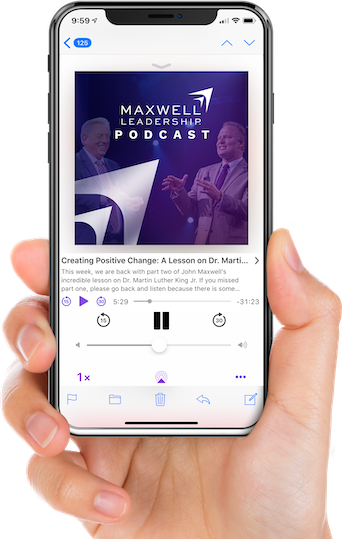Five Steps for Connecting with Others

I usually start a blog with a story or some sort of introductory idea to get your brain moving in the right direction.
But I’m not doing that with this post. Instead, I want to jump right in and give you five steps for connecting with others.
Connection is a critical part of leadership, because you can’t lead if no one will follow. You have to connect with others in order to be a leader.
With that in mind, I want to share the following five steps for connecting with anyone. It can be a someone new, someone familiar, or someone you’re attempting to re-connect with after time. No matter who the other person is, if you’ll follow these five steps, you’ll be certain to create a genuine connection with them.
Step One: Set aside your agenda—if you want to connect with other people, you must make their agenda your priority in that moment. Genuine connection isn’t about making sure people understand you; it’s about making sure you understand other people. Clear your mind of your own worries, fears, ambitions, and plans, in order to focus on what the other person has to say.
Step Two: Ask curious questions—this goes hand in hand with my first point, because the practical step for getting out of your own head is to ask questions that help you get into the head of someone else. Curious questions have a layering effect; they build on one another and help drive the conversation to new and interesting places. Curious questions also help the other person know you’re engaged with them and want to keep the connection going.
Step Three: Lean into the conversation—this is the mid-point of connection, and it’s where self-discipline is most important. Leaning into a conversation is NOT the same as taking over a conversation. Leaning in does not mean shifting the rest of the conversation to you and your interests. Leaning in means increasing your curiosity and adding in thoughts that spur the connection deeper. It’s renewing your interest in your connection with the other person.
Step Four: Make a memorable moment— memorable moments don’t need to be manufactured, but they do need to be sought. A connection becomes memorable when both parties walk away with something positive to hold onto. Making a memorable moment doesn’t require a lot, but it does require authenticity on your part. You can make a memorable moment by zeroing in on a significant lesson you learned, or a statement that impacted you. It could be a shared laugh, a moment of grief, or a deep sense of community with the other person.
Step Five: Keep the connection alive—while it’s hard to create a connection, keeping one alive is considerably easier. It’s an intentional decision to keep the other person with you in some way. You might exchange encouraging texts or send one another helpful emails from time to time. Maybe it’s just the courtesy of remembering that person’s name so you can greet them and quickly reconnect the next time you see them. Do what you need to do to keep the spark alive, so you can build on it in the future.
One of my favorite connections came at a business event where I was speaking years ago. I’ve told this story before, but at this event, I had copies of The Maxwell Leadership Bible with me. A gentleman came up to the table where I was signing books and pointed to the Bible.
“Did you write this?” he asked.
“I didn’t write the Bible,” I replied. “But I did add some leadership thoughts to help people understand where my leadership principles come from.”
He picked up a Bible and paid for it. He looked at me and said, “I’ve never read the Bible before, but if this has leadership in it, I’m interested.”
Now, there isn’t a lot to the conversation part of this connection, but I wasn’t trying to sell the man a book. I wasn’t trying to do anything more than pay attention to him and his journey. And something about that moment—about that man—made me realize I needed to remember his face. So I studied him intently, albeit briefly, and committed his face to memory.
Years later, at a different event, I saw his face in the crowd. He made his way to me, smiling, and said, “You probably don’t remember me, do you?”
“Yes I do!” I said. “It was years ago, and you bought a Bible so you could read about leadership.”
“Yes!” he replied. “And I want you to know—I did read that Bible. And it changed my life.” That’s the power of connection. It can change someone’s life—and your leadership—when you’re intentional about creating one.
More Articles

Do I Believe The Best In Others?

Does Love Work as a Leadership Principle?









26 thoughts on "Five Steps for Connecting with Others"